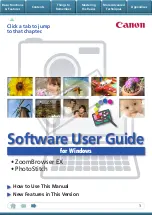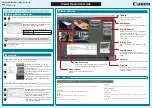
Using SL-1 with MCDN to network with a Meridian system
537
Programming Operations Guide
Using SL-1 with MCDN to network with a Meridian system
When you connect your Business Communications Manager systems through the SL-1 MCDN
protocol to a Meridian 1, the Meridian system manages several aspects of the network, including
voice mail, auto attendant services, and system timing.
Programming note:
For information about networking voice over IP (VoIP) trunks, which also
can be set to use MCDN, refer to the
IP Telephony Configuration Guide
. For networks running
Business Communications Manager BCM 3.5 software or newer, the trunk protocol for
Meridian 1 IPT connection should be set to CSE.
This section includes the follow information about setting up an MCDN network:
•
“Meridian system requirements”
•
“MCDN networking checklist” on page 538
An example of an MCDN system and the Business Communications Manager programming to
support it, is given in
“An example of a private network with Meridian 1” on page 541
.
Meridian system requirements
When setting up networking with Meridian, the Meridian systems must provide the following:
•
the correct software version to allow MCDN features (If your Meridian system administrator
cannot confirm this, call your technical support center (TSC) or 1-800-4NORTEL.)
The Meridian must provide the following:
— end-to-end signaling (option 10)
— message center (option 46) and an IVMS link (option 35)
— Meridian Mail link (option 77 and 85)
— basic Attendant Console Directory features (options 40, 45, and 83)
— ISDN PRI or ISDN Signaling link (option 145 and 146 or 145 and 147)
— advanced ISDN features (option 148)
— network message services (option 175)
•
act as the timing master for the private network connections
•
use descending mode for PRI B-channel selection
•
recognize dial codes for all nodes in the network.
•
provide routing tables that direct incoming calls to the correct nodes on the network, including
DID calls from the public network
•
recognize the destination code (usually 9) that indicates a public network call, regardless of
where in the network the number was dialed from.
Summary of Contents for BCM 3.7
Page 4: ...4 Software licensing N0008589 3 3...
Page 32: ...32 Contents N0008589 3 3 W 937 Index 939...
Page 46: ...46 Tables N0008589 3 3...
Page 64: ...64 How to get help N0008589 3 3...
Page 90: ...90 Manually activating Telnet N0008589 3 3...
Page 116: ...116 Delayed system restart N0008589 3 3...
Page 194: ...194 Configuring a data module N0008589 3 3...
Page 276: ...276 Setting line telco features N0008589 3 3...
Page 310: ...310 Using COS passwords N0008589 3 3...
Page 364: ...364 Enhanced 911 E911 configuration N0008589 3 3...
Page 380: ...380 Renumbering DNs N0008589 3 3...
Page 398: ...398 Saving wizard pages on your computer N0008589 3 3...
Page 458: ...458 Voice Mail settings N0008589 3 3...
Page 488: ...488 Setting system telco features N0008589 3 3...
Page 508: ...508 Other programming that affects public networking N0008589 3 3...
Page 522: ...522 PRI networking using Call by Call services N0008589 3 3...
Page 592: ...592 Monitoring Hunt groups N0008589 3 3...
Page 636: ...636 Configuring Double Density N0008589 3 3...
Page 640: ...640 Using the Network Update Wizard N0008589 3 3...
Page 666: ...666 Importing and Exporting DHCP data N0008589 3 3...
Page 722: ...722 Restarting the router N0008589 3 3...
Page 726: ...726 Important Web Cache considerations N0008589 3 3...
Page 748: ...748 Configuring an Interface with NAT N0008589 3 3...
Page 794: ...794 IPSec N0008589 3 3...
Page 818: ...818 Configuring the Policy Agent characteristics N0008589 3 3...
Page 832: ...832 Firewall rules for Business Communications Manager with Dialup interfaces N0008589 3 3...
Page 876: ...876 ISDN Programming N0008589 3 3...
Page 1004: ...1004 Index N0008589 3 3...
















































